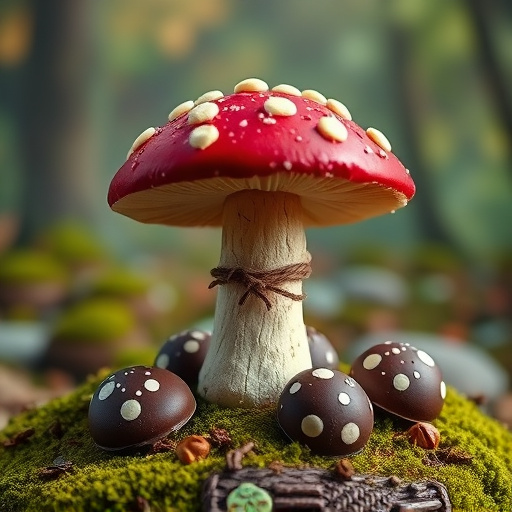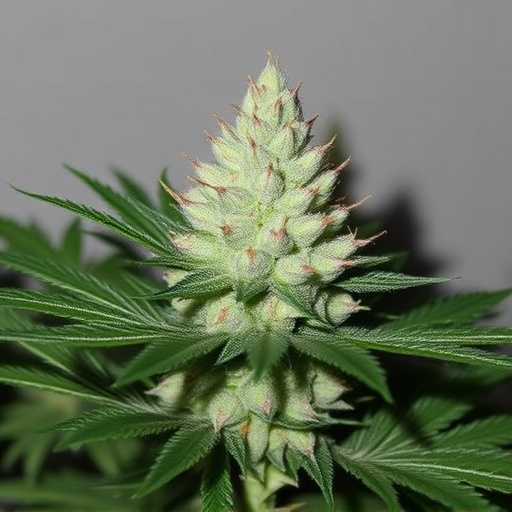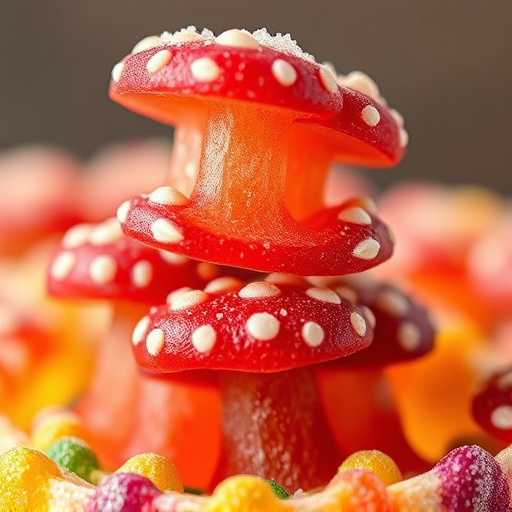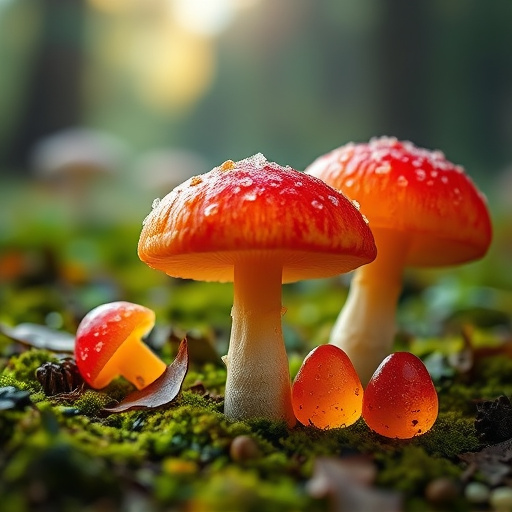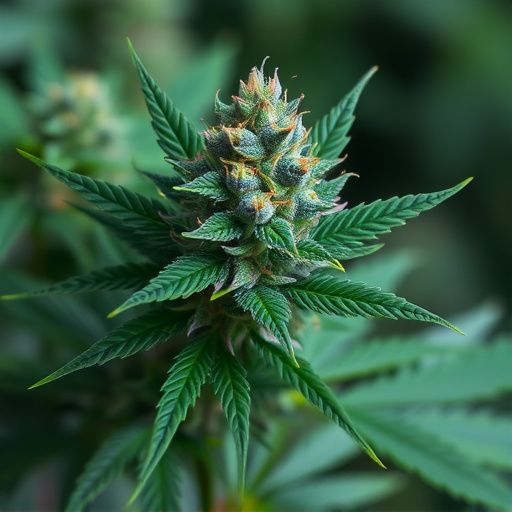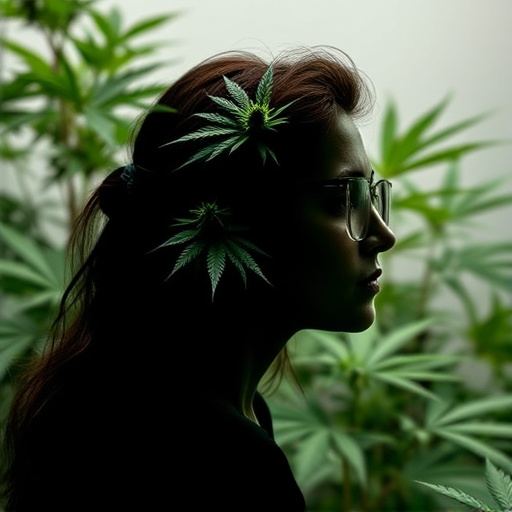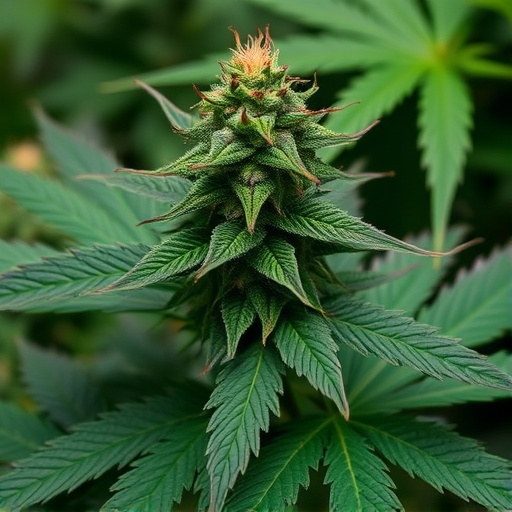Cannabis plants contain diverse chemical compounds, including cannabinoids THC and CBD, and pigments like anthocyanins and flavonoids, that interact with the body's endocannabinoid system to offer potential anxiety relief. Genetic variations cause varied pigment production among different cannabis strains, resulting in unique colors like purple, blue, and red, which can indicate specific cannabinoid profiles tailored for individual needs, particularly for managing anxiety disorders. Strains targeted towards anxiety relief leverage their visual distinctiveness—from vibrant purples to calming reds—to enhance therapeutic experiences based on cannabinoid and terpene content.
Uncover the captivating secrets behind the vibrant hues that transform cannabis into a visually stunning and sought-after commodity. In this article, we explore what causes purples, reds, and blues in weed, delving into the complex interplay of cannabinoids and pigments. We uncover how genetics play a pivotal role in creating unique strain colors while also focusing on specific cannabis strains known for their anxiety-relieving properties and distinctive visual traits. Discover the fascinating connection between appearance and effect in the world of cannabis strains for anxiety.
- Understanding Cannabinoids and Pigments in Cannabis
- The Role of Genetics in Creating Unique Strain Colors
- Exploring Cannabis Strains for Anxiety Relief with Distinct Visual Traits
Understanding Cannabinoids and Pigments in Cannabis
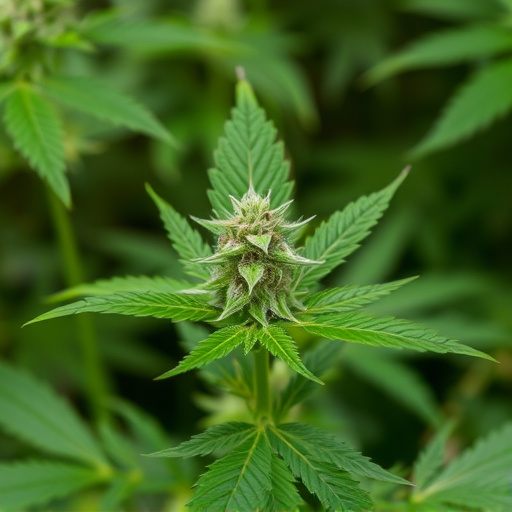
Cannabis plants, scientifically known as Cannabis sativa, produce a diverse range of chemical compounds that contribute to its unique properties and effects on the human body. Among these compounds, cannabinoids and pigments play a significant role in determining the plant’s appearance and therapeutic potential. Cannabinoids are chemical substances that interact with our endocannabinoid system, which is involved in regulating mood, memory, pain sensation, and appetite. Each cannabis strain carries a distinct profile of cannabinoids, such as THC (tetrahydrocannabinol) and CBD (cannabidiol), offering various benefits, including potential relief for anxiety.
Pigments in cannabis, including anthocyanins and flavonoids, are responsible for the plant’s vibrant colors—purple, red, and blue. These pigments not only contribute to the visual appeal but also possess antioxidant properties, which can have positive effects on human health. Different strains of cannabis showcase a wide array of these pigments, leading to variations in color and potential therapeutic benefits, such as enhanced relaxation or improved cognitive function, making them popular choices for those seeking natural remedies for anxiety and stress-related conditions.
The Role of Genetics in Creating Unique Strain Colors

The colors of cannabis flowers are a result of complex interactions between genetics and environmental factors. Each cannabis strain carries a unique genetic makeup that influences its appearance, including its pigment production. These genetic variations lead to the diverse range of colors we see in cannabis, from vibrant purple to deep blue and rich red hues.
Genetic diversity within cannabis plants allows for the expression of various pigments, such as anthocyanins and flavonoids, which contribute to the striking coloration. Different cannabinoid profiles, often sought after by users looking for cannabis strains for anxiety relief or other therapeutic benefits, are also linked to these genetic variations. This natural diversity ensures that there’s a vast array of cannabis strains available with distinct visual characteristics and potential effects tailored to individual needs.
Exploring Cannabis Strains for Anxiety Relief with Distinct Visual Traits

Cannabis has gained recognition for its potential in alleviating anxiety, and one intriguing aspect is the variety of visual traits associated with different strains. Exploring cannabis strains specifically tailored for anxiety relief offers a unique perspective on the plant’s therapeutic benefits. Each strain possesses distinct characteristics, from vibrant purple hues to intense blues or calming reds, all contributing to an enhanced sensory experience.
These visual cues are not merely cosmetic; they can provide valuable insights into the chemical composition of the plant. Cannabis strains often get their colors from cannabinoids and terpenes, which play a crucial role in determining the plant’s therapeutic properties. For instance, purple buds might indicate higher levels of THC, known for its potent anxiolytic (anxiety-reducing) effects. Similarly, blue strains are associated with increased levels of CBD, renowned for its calming attributes and potential in managing anxiety disorders.
In understanding what causes purple, red, and blue weed, we uncover a fascinating interplay between cannabinoids, genetic diversity, and the art of strain cultivation. The vibrant colors in cannabis are not merely aesthetic; they often correlate with specific cannabinoid profiles known for their therapeutic effects, particularly in alleviating anxiety. By exploring these unique strains with distinct visual traits, we can gain insight into the complex relationship between nature’s pigments and mental well-being, offering a more nuanced approach to selecting cannabis for anxiety relief.


